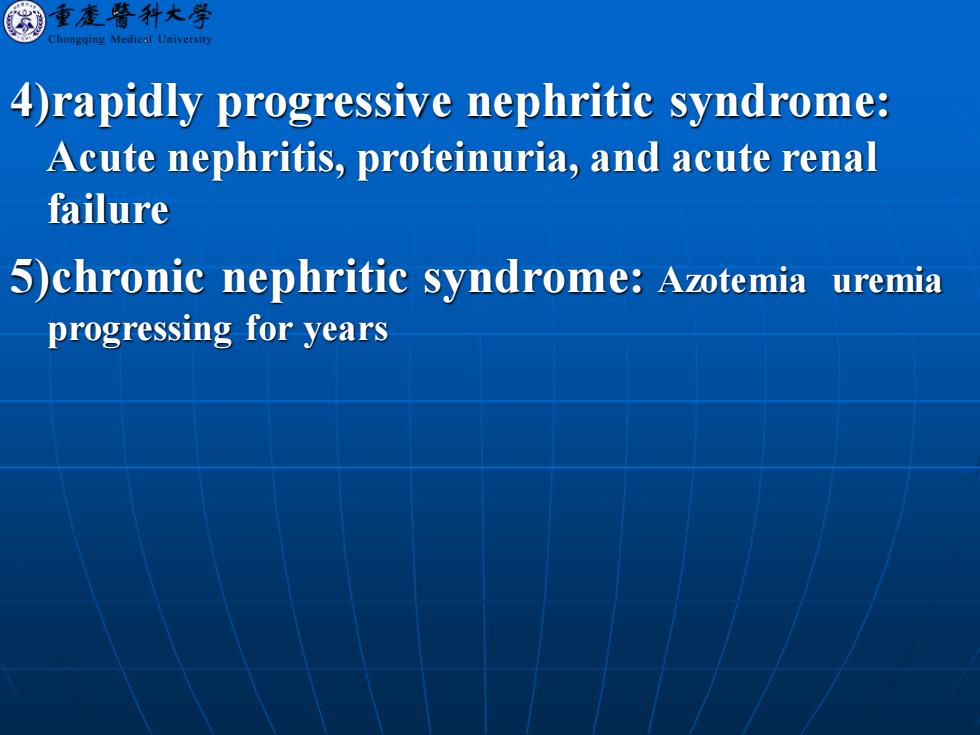
圈重麦晋行大学 gqing Med山eal Univers 4)rapidly progressive nephritic syndrome: Acute nephritis,proteinuria,and acute renal failure 5)chronic nephritic syndrome:Azotemia uremia progressing for years
4)rapidly progressive nephritic syndrome: Acute nephritis, proteinuria, and acute renal failure 5)chronic nephritic syndrome: Azotemia uremia progressing for years
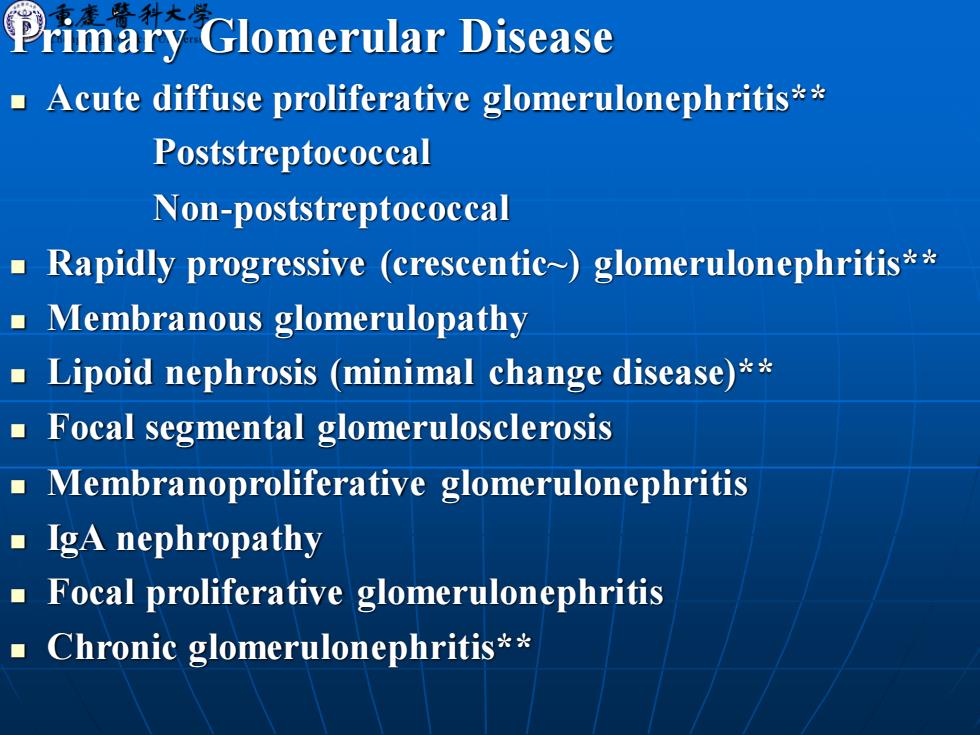
Primary Glomerular Disease Acute diffuse proliferative glomerulonephritis** Poststreptococcal Non-poststreptococcal Rapidly progressive (crescentic~)glomerulonephritis** Membranous glomerulopathy Lipoid nephrosis (minimal change disease)** Focal segmental glomerulosclerosis Membranoproliferative glomerulonephritis ▣IgA nephropathy Focal proliferative glomerulonephritis Chronic glomerulonephritis**
Primary Glomerular Disease ◼ Acute diffuse proliferative glomerulonephritis** Poststreptococcal Non-poststreptococcal ◼ Rapidly progressive (crescentic~) glomerulonephritis** ◼ Membranous glomerulopathy ◼ Lipoid nephrosis (minimal change disease)** ◼ Focal segmental glomerulosclerosis ◼ Membranoproliferative glomerulonephritis ◼ IgA nephropathy ◼ Focal proliferative glomerulonephritis ◼ Chronic glomerulonephritis**
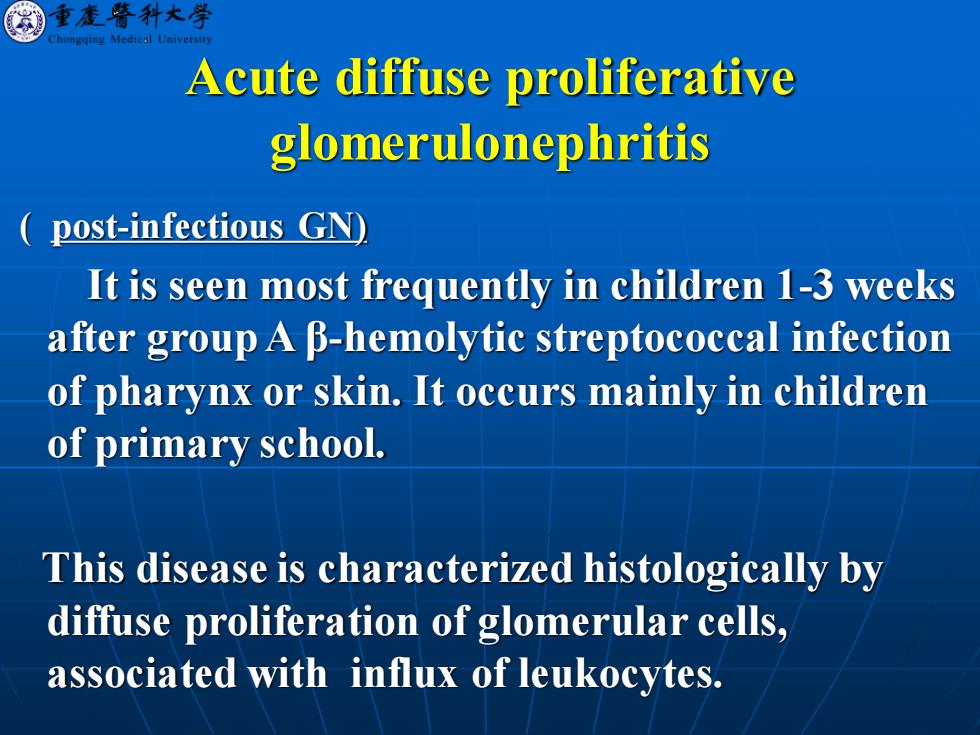
重蹇普科大学 Acute diffuse proliferative glomerulonephritis post-infectious GN) It is seen most frequently in children 1-3 weeks after group A B-hemolytic streptococcal infection of pharynx or skin.It occurs mainly in children of primary school. This disease is characterized histologically by diffuse proliferation of glomerular cells, associated with influx of leukocytes
Acute diffuse proliferative glomerulonephritis ( post-infectious GN) It is seen most frequently in children 1-3 weeks after group A β-hemolytic streptococcal infection of pharynx or skin. It occurs mainly in children of primary school. This disease is characterized histologically by diffuse proliferation of glomerular cells, associated with influx of leukocytes
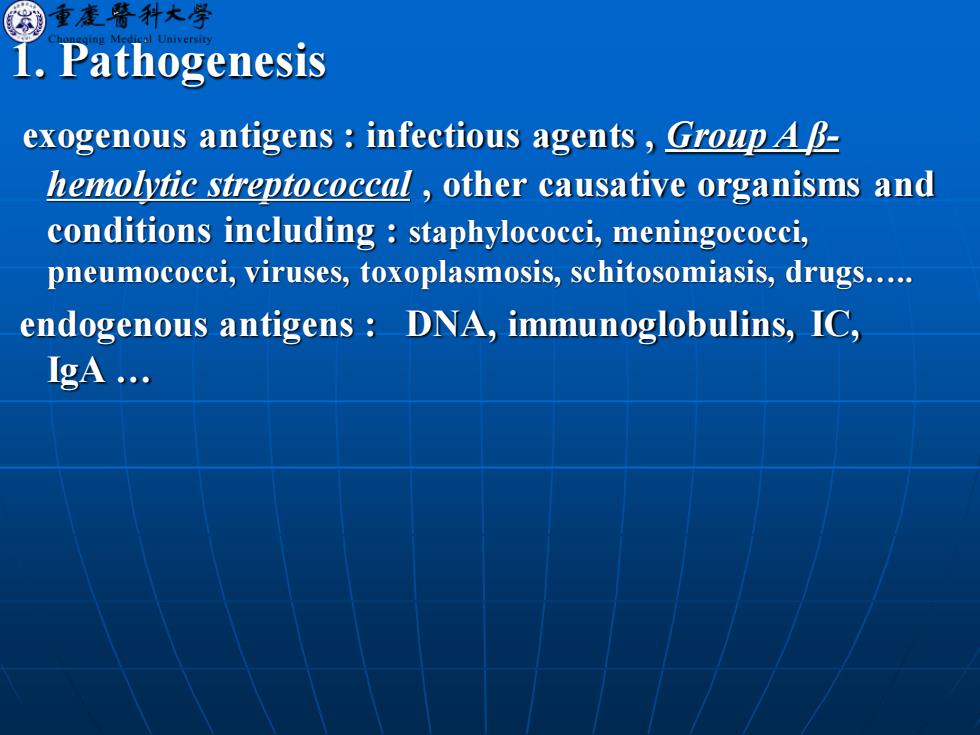
霸重走等科大导 I.Pathogenesis exogenous antigens infectious agents Group AB- hemolytic streptococcal,other causative organisms and conditions including staphylococci,meningococci, pneumococci,viruses,toxoplasmosis,schitosomiasis,drugs. endogenous antigens DNA,immunoglobulins,IC, IgA
1. Pathogenesis exogenous antigens : infectious agents , Group A β- hemolytic streptococcal , other causative organisms and conditions including : staphylococci, meningococci, pneumococci, viruses, toxoplasmosis, schitosomiasis, drugs. endogenous antigens : DNA, immunoglobulins, IC, IgA
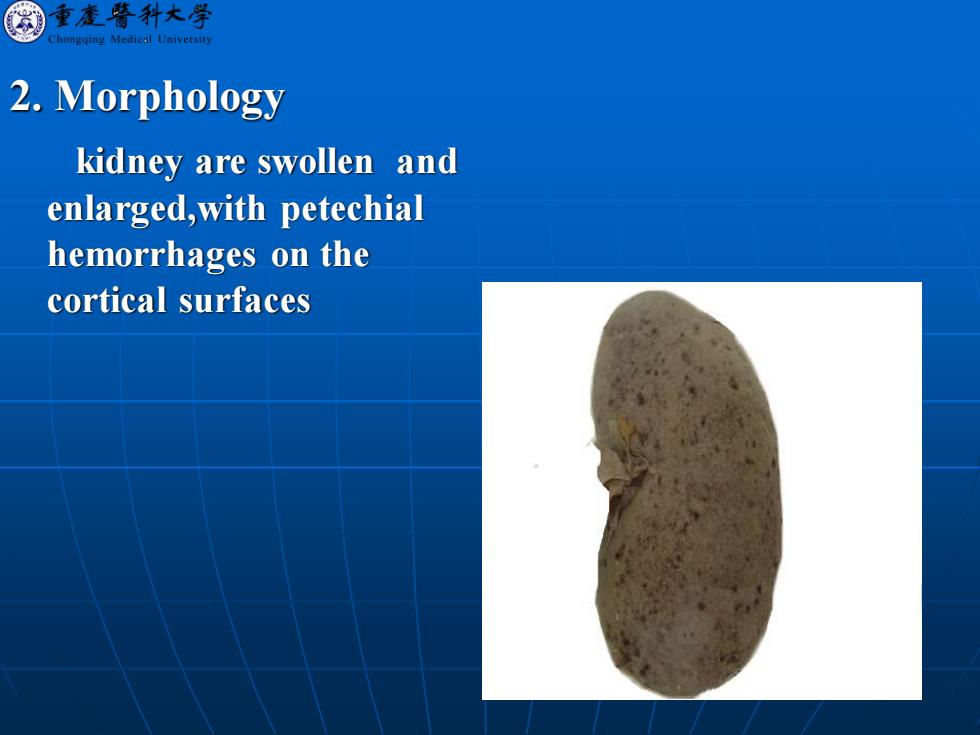
圈重麦晋行大学 gqing Med山l Universits 2.Morphology kidney are swollen and enlarged,with petechial hemorrhages on the cortical surfaces
2. Morphology kidney are swollen and enlarged,with petechial hemorrhages on the cortical surfaces